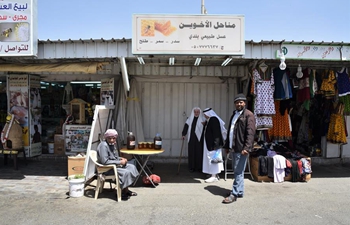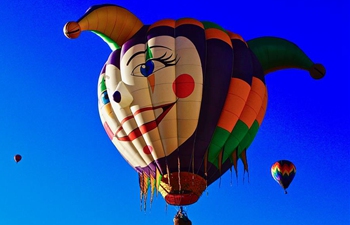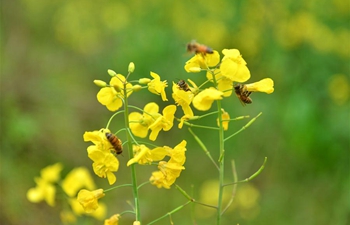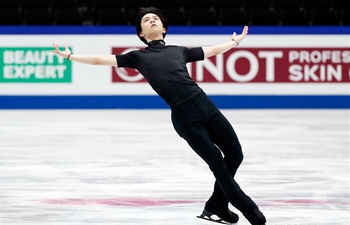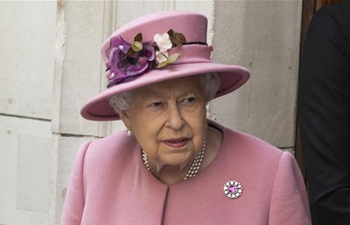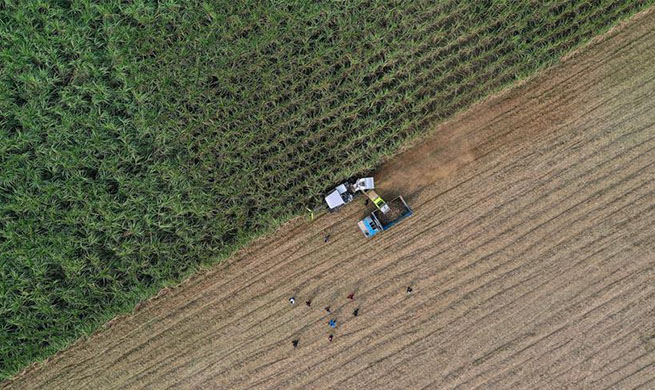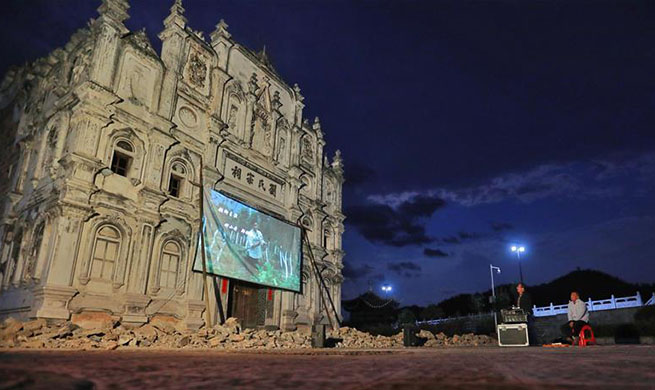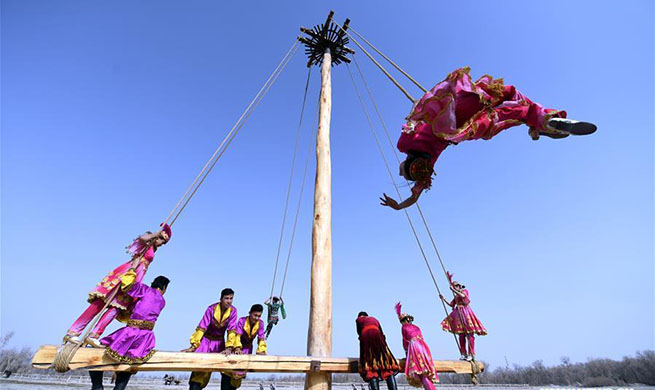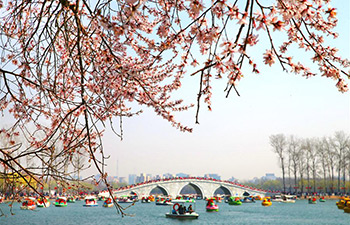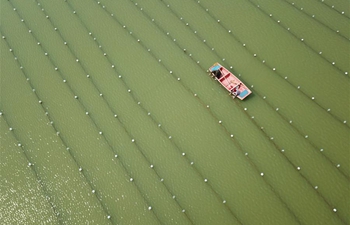Chicago, March 19 (Xinhua) -- The Wildlife Photographer of the Year Exhibition is coming to Chicago for the first time and will open to the public at Chicago's Field Museum of Natural History on Friday.
Photos to be exhibited include the 2018 Grand Title Winner which presents two Qinling golden snub-nosed monkeys in Shaanxi province, China.
The photo, titled the Golden Couple and taken by Marsel van Oosten from the Netherlands, captures a male and female monkeys resting on stones in their natural habitat.
"Marsel considers the Qinling golden snub-nosed monkey to be the most beautiful of all the primates and has made four trips to China specifically to photograph them," said Clare Matterson, director of engagement for the National History Museum in London, at a media preview held on Tuesday.
"An international panel of experts selected 100 images from over 45,000 entries in 95 countries," said Matterson who has just flown to Chicago for the opening of the exhibition.
Photographers around the globe, both professional and amateur, enter for the annual competition of the Wildlife Photographer of the Year since its inception in 1965. Winners of the competition in the past years came from Europe, North America, Africa and Asia.
The competition falls into 16 adult categories, ranging from behavior, animal portraits, underwater, landscape, urban wildlife and wildlife photojournalism; and three Young categories for people aged 17 or younger.
There were 21 entrants from China in 2017 and 105 entrants in 2019, a sharp increase, Matterson said.
The Wildlife Photographer of the Year exhibition, initiated by London's Natural History Museum, showcases photos from the winners of the longest-running nature photography competition of its kind in the world.
"The Field Museum is such an important natural history museum," said Matterson, adding that "we are very excited to be here."
"These photos capture animals and plants in their natural environments," said Janet Hong, project manager at the Field Museum. "It's amazing how much narrative you can get from a frozen moment."
The photos are all on display against backlit dark panels, and under each image there is a narrative explaining where and how the photo was captured.
"Our core mission is to deepen the understanding of the natural world and preserve it," said Rick Ree, curator of flowering plants at the Field Museum. "These images bring the efforts of photographers and scientists together."
Ree said that seeing these images on the large screen allows visitors to experience them in a way that is quite different from seeing them on paper.
"They are so powerful on the large panel that you feel like you can almost step into them," added Ree. "It's very emotional and compelling."
"I hope the exhibition will help people pay attention to plants and animals wherever they go, appreciate the beauty and diversity of nature and take photos," Hong added.
The exhibition will run through Jan. 12, 2020.

